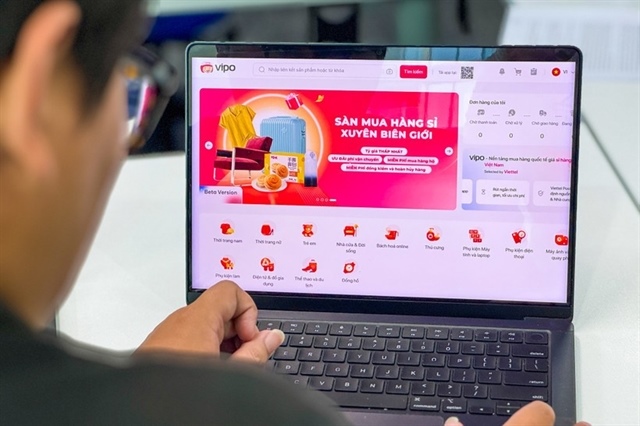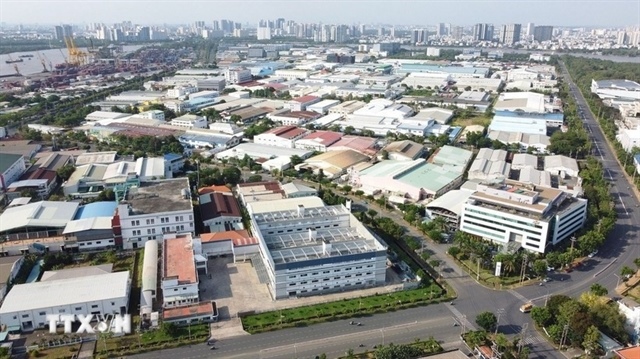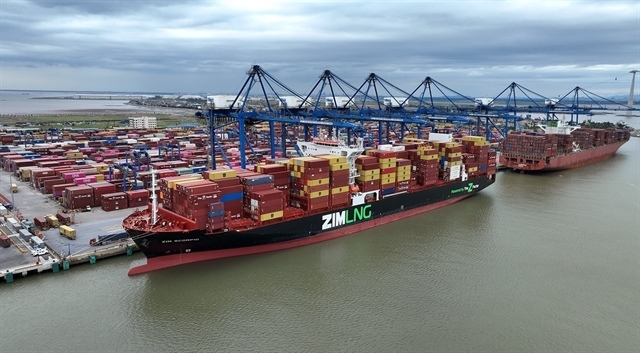ASEAN+3 remains resilient but needs to transition to a new economy
ASEAN+3 remains resilient but needs to transition to a new economy
The economy of the ASEAN+3 region is expected to remain resilient despite heightened global risks and stronger external headwinds, said the annual regional economic outlook report released on Wednesday by the ASEAN+3 Macroeconomic Research Office (AMRO).

Regional growth is expected to moderate slightly to 5.1 per cent this year and 5 per cent in 2020, a slightly slower pace compared to 2018, according to the report.
Viet Nam remains in the top three fastest growing economies in the region, with the real gross domestic product (inflation-adjusted GDP) expected to grow 6.6 per cent in 2019 and 6.7 per cent in 2020. This growth rate puts the nation behind only Myanmar and Cambodia, both likely to rise more than 7 per cent in 2019 and 2020.
Viet Nam’s inflation is expected to increase by 3.8 per cent and 3.7 per cent in 2019 and 2020, higher than the 2018 inflation rate of 3.5 per cent.
The ASEAN+3 Regional Economic Outlook 2019 report provides an assessment of the risks and challenges facing regional economies.
“While regional growth is softening from 5.3 per cent last year to 5.1 per cent in 2019 and 5 per cent in 2020, the longer-term economic fundamentals remain intact,” AMRO Chief Economist Dr Hoe Ee Khor said at the report’s launch. “Regional policymakers should stand ready to use available policy space to ease monetary and fiscal policies to mitigate the downside risks and support the economy if external conditions were to worsen.”
In the near term, the risks confronting the region are mainly external.
According to AMRO’s Global Risk Map, the biggest risk is still the escalation of global trade tensions from the imposition of additional tariffs by the US, which could weigh on global growth and be exacerbated by a sharp deceleration in capital expenditure (capex) and tech cycle.
The region could also be hit by volatility shocks from turbulent financial markets given that expectations can change suddenly, it said.
Transition to a new economy
After more than two decades of prospering under the “manufacturing for exports” strategy, ASEAN+3 policymakers are encouraged to prioritise longer-term policies, especially those focused on building capacity and connectivity to leverage the Fourth Industrial Revolution (Industry 4.0) and sustain growth in the new economy.
Globally, manufacturing and services will be transformed by Industry 4.0, which will require higher levels of technological expertise to deliver customised goods, services and experiences to an increasingly large and affluent middle class.
Commenting on Viet Nam, AMRO Chief Economist Dr Khor said the country has adopted the traditional manufacturing for exports model and benefited greatly as it has attracted a lot of investments from South Korea, Japan and China. Viet Nam has established itself as a manufacturing hub for exports; the challenge for the country is to move up the value chain in the manufacturing sector.
“Manufacturing companies come to Viet Nam and want to benefit from low costs but over time as the economy grows, they have to upscale the technology base and Viet Nam has also to move up the value chain,” Khor told Viet Nam News at a sideline event of the 52nd Annual Meeting of the Asian Development Bank (ADB), being held in Fiji from May 1 to 5.
The Vietnamese Government could focus on expanding vocational training programmes to upscale the labour force, Khor said. Viet Nam was doing well in diversifying its economy, he said, noting that services, tourism and culture are doing well, but Viet Nam still needed to build skills and move up the value chain.
“It is happening and we’re optimistic about that,” he said.
AMRO pointed out three key challenges to regional growth, including the funding, foreign exchange and factor gaps.
The funding gaps capture the shortfalls between the low domestic savings and large investment needs of lower-income economies, while the foreign exchange gap has to do with the financing constraints on emerging economies arising from the need to accumulate foreign reserves to mitigate risks related to sudden capital flows. The factors gap captures non-financial constraints, including the need to develop human capital, expertise, technological capacity and governance frameworks.
To address these challenges, there is a strong need for ASEAN+3 economies to leverage intra-regional savings and investments; strengthen regional financial safety nets, including the Chiang Mai Initiative Multilateralisation (CMIM); and redouble efforts to develop the region’s technological capacity, professional expertise in various fields and institutions for growth and governance, it said.























